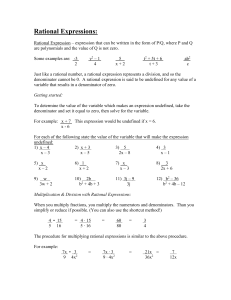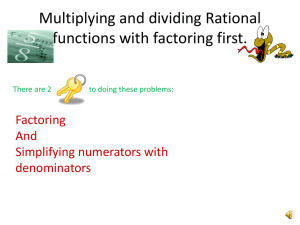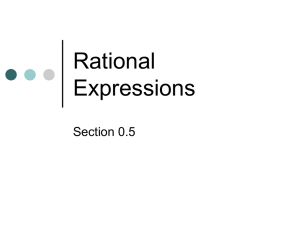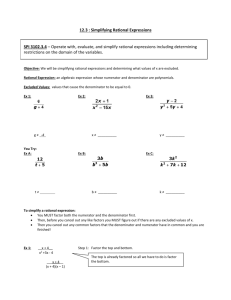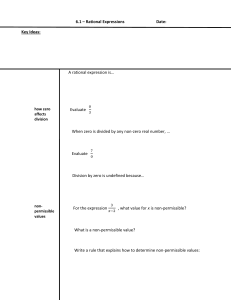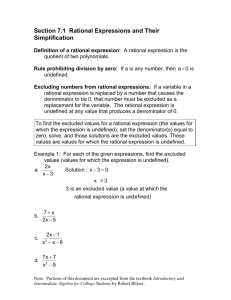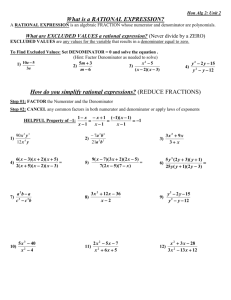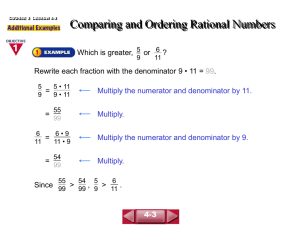Chapter 6 Concept Review
advertisement
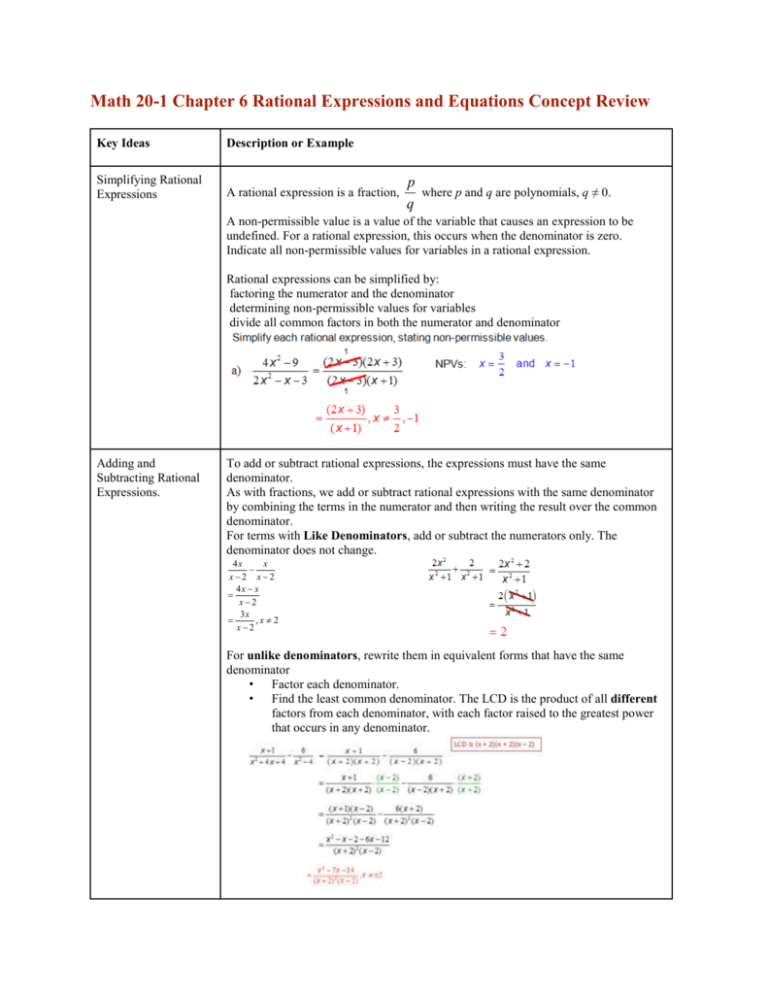
Math 20-1 Chapter 6 Rational Expressions and Equations Concept Review Key Ideas Description or Example Simplifying Rational Expressions A rational expression is a fraction, p where p and q are polynomials, q ≠ 0. q A non-permissible value is a value of the variable that causes an expression to be undefined. For a rational expression, this occurs when the denominator is zero. Indicate all non-permissible values for variables in a rational expression. Rational expressions can be simplified by: factoring the numerator and the denominator determining non-permissible values for variables divide all common factors in both the numerator and denominator Adding and Subtracting Rational Expressions. To add or subtract rational expressions, the expressions must have the same denominator. As with fractions, we add or subtract rational expressions with the same denominator by combining the terms in the numerator and then writing the result over the common denominator. For terms with Like Denominators, add or subtract the numerators only. The denominator does not change. 4x x x2 x2 4x x x2 3x ,x 2 x2 For unlike denominators, rewrite them in equivalent forms that have the same denominator • Factor each denominator. • Find the least common denominator. The LCD is the product of all different factors from each denominator, with each factor raised to the greatest power that occurs in any denominator. Multiplying Rational Expressions To Multiply Rational Expressions: (a common denominator is not required) 1. Factor the polynomials in each numerator and denominator 2. Simplify the expression by dividing out common factors in both the numerator and denominator. *Don’t forget to simplify before you multiply! 3. State the NPV’s Dividing Rational Expressions To Divide Rational Expressions: 1. Factor the polynomials in the numerators and denominators if possible 2. List all non-permissible values for the variables. 3. Multiply the first term by the reciprocal of the second term 4. Divide out common facots Solving Rational Equations Solving Problems To Solve a rational equation: 1. Determine the LCD of the denominators, list all NPV’s 2. Multiply both sides of the equation by the LCD. Reduce common factors. 3. Solve the resulting polynomial equation. 4. Verify all solutions Solving Problems Vocabulary Definition Non-Permissible Values (NPV’s) NPV’s are any values for a variable that would make a denominator equal to zero. The denominator may need to be factored to determine the restrictions on the variable. Restrictions on the variable. Rational Equation A rational equation is an equation containing at least one rational expression. Common Errors Description When simplifying rational expressions, an error is to divide only one term in the dividend by the divisor. Incorrect NPV’S 3x 6 3x Correct 3( x 2) 3x x2 x 1. Forget to identify the non-permissible values before simplifying and multiplying. 2. Forget to identify the non-permissible values for the numerator of the divisor in a division statement. 3. Forget to identify the non-permissible values for the equivalent forms of a rational expression. The non-permissible values must be determined in each case before the expression is simplified.

